## 最新的更新见
https://blog.csdn.net/Mr_Cat123/article/details/80215341
1.字体大小
本文是笔者初学WinEdt用以编辑Latex的笔记,只涉及一些简单问题,详细请参考百度文库(点点这几个字看看~~)
本文的主要参考文献是ta
1.字体大小
options—options interface—Font schemes—Font双击从右边找到FONT_SIZE将10改为自己想要的,如14—-保存—右键单击左边之前的Font—-Load Script—结束
2.分段机制
在原码中空一行,则生成的pdf会换行
3.空格
参考自:seaskying
当然直接空一格也是可以得到一个空格的,如下:
$a$, $b$, $c$.
$a,\ b,\ c.$
The first three letter are a, b, c.- 1
- 2
- 3
- 4
- 5
结果为: 
所以如果要空格直接按空格键即可,即上面代码的1和3方式
4.自动补全
快捷键:Ctrl+Enter
5.数学模式与文本模式(包括行内公式和行间公式)
引入数学宏包{amssyb},American mathematics society symbol.例句如下
% !Mode::"TeX:UTF-8"
\documentclass{article}
\usepackage{amssymb}
\begin{document}
\section{symbol}
1+1=2, $$1+1=2$$, $I know 1+1=2,$
This is in text mode, $This is in math mode,$ $This\ is\ in\ math\ in\ mode.$
\end{document}- 1
- 2
- 3
- 4
- 5
- 6
- 7
- 8
- 9
- 10
结果如下:
对行内公式和行间公式总结如下:
6.输入函数
输入函数前面加斜杠”\”
如:
$\frac{10}{11}, \sqrt[3]{x^2+1}, \ldots, \sin x, \cos x.$- 1
结果如下: 
可以看到,虽然在上面代码每个逗号之后都输入了空格,但得到的pdf文档并没有逗号,而英文中是习惯在逗号,句号等符号之后加空格的,这个时候可以将上面代码改为:
$\frac{10}{11},$ $\sqrt[3]{x^2+1},$ $\ldots,$ $\sin x,$ $\cos x.$- 1
即每个函数单独用美元符号分开,并在两者之间加符号。
$\sum_{n=1}^{\infty}$
$$\sum_{n=1}^{\infty}$$
$$\lim_{n \to \infty}(1+\frac{1}{n})^n = e,$$
$$\int_{-\infty}^{+\infty}\frac{\sin x}{x} \mathrm{d}x=I$$
$\alpha,\beta,\gamma,\delta\epsilon\varepsilon\xi\pi\rho\sigma\eta\theta\phi\varphi\omega$
$\Gamma\Phi$
$|A|,\|a\|,\vec{a},\overleftarrow{AB},\tilde{x},\widetilde{xyz},sin,\mathrm{sin}$
$\mathbb{AB},\mathbf{abAB}$- 1
- 2
- 3
- 4
- 5
- 6
- 7
- 8
- 9
- 10
- 11
- 12
- 13
- 14
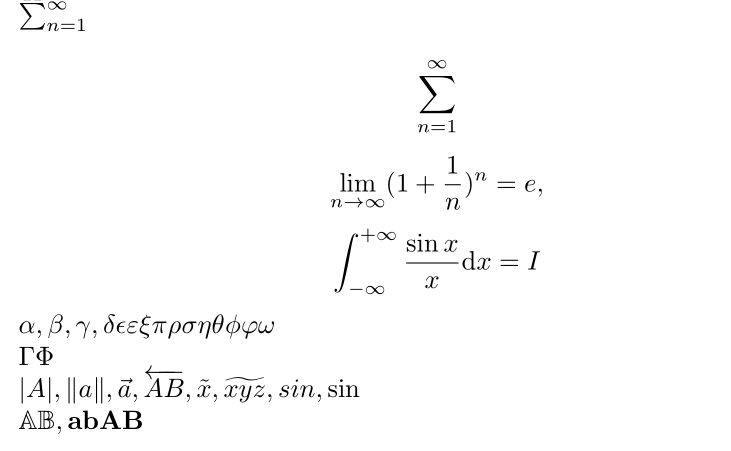
(1)第一行是行内公式和第二行的行间公式是不一样的,这是出于文本美观的目的。
(2)\mathrm{d}那儿是为了和x不同,因为d是直立的而不是变量,而x是变量,这里mathrm=math roman
(3)剩下的看到gamma等希腊字母第一个字母大写则表示输出的文本是大写,这里值得注意的是:alpha,beta,varepsilon等是没有大写形式的,因为其大写形式就是ABE,不能输入\Alpha,\Beta……
(4)mathbb=math blackboard, mathbf=math boldface
实际上第行中的括号应该是大括号而不是小括号,细节见下节。
7.矩阵和大括号
先看矩阵
\begin{equation}
\left(
\begin{array}{ccc}
a_{11}& a_{12} & a_{13} \\
a_{21} & a_{22} & a_{23} \\
a_{31} & a_{32} & a_{33}
\end{array}
\right)
\end{equation}- 1
- 2
- 3
- 4
- 5
- 6
- 7
- 8
- 9
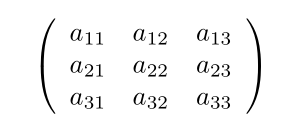
(1)以上begin{equation}开始了一个公式环境,在这个环境中可以直接输入变量、函数等而不需要加$符号,上面等同于
$$ \left(
\begin{array}{ccc}
a_{11}& a_{12} & a_{13} \\
a_{21} & a_{22} & a_{23} \\
a_{31} & a_{32} & a_{33}
\end{array}
\right)$$- 1
- 2
- 3
- 4
- 5
- 6
- 7
(2)\left( and \right) are left bracket and right bracket. 能够通过括号内的内容自动改变括号大小。所以上面6中的第三行应该改为:
$$\lim_{n \to +\infty}\left(1+\frac{1}{n}\right)^n=e$$- 1

(3)符号&是用来分隔列的,同一行不同列之间的元素用&分隔开
(4){ccc}是array中必选参数,为center,center,center,表示三列都居中,
(5)\是强制换行符号
8.分段函数
分段函数是在矩阵的基础之上的,比如如下的分段函数
\begin{equation}
f(x)=
\left\{
\begin{array}{cc}
\int \mathrm{d}^3p\int_{0}^{\infty}\mathrm{d}x x^2 \frac{\delta(E-\sqrt{p^2+m^2})}{2E} , & x \geq 0 \\
0,& x < 0
\end{array}
\right.
\end{equation}- 1
- 2
- 3
- 4
- 5
- 6
- 7
- 8
- 9

(1)不需要右括号
(2)&的作用是使得列对齐
9.加载宏包doc文档
当我们使用一个宏包比如amsmath,想要得到说明文时可以如下操作:
在控制台上点击终端cmd窗口,输入tex xxx(xxx是宏包名,如amsmath)回车即可。
终端按钮如下图:
10.输入中文以及宏包安装
输入中文需要用到ctex包,这是专门针对中文而设计的包,使用时在前面将
\document{article}- 1
改为
\document[UTF8]{ctexart}- 1
即可,(有的不需要加方括号中的内容),或者\document{article}不变,在其下加入一个宏包为
\usepackage[UTF8]{ctex}- 1
此外,中文包还可以使用
\usepackage{CJK}- 1
当然,前提是已经安装ctex宏包,通常情况都会自动安装好,如果没有安装可以如下(笔者用的是Tex live)
开始—tex live—tex live manager—找到ctex—点击安装 
值得注意的是:宏包已经都不需要网上下载安装,而是直接从库上安装缺少的宏包,方法就是上面的方法。
11.插入图片
插入图片需要加载宏包
\usepackage{graphicx}- 1
或
\usepackage{graphics}- 1
建议前者。
插入图片的环境为:
\begin{figure}[ht]
\centering
\includegraphics[width=10cm]{hh}
\caption{这个是图片}\label{bbb}
\end{figure}- 1
- 2
- 3
- 4
- 5
解释:
(1)第一句begin{figure}代表开始插入图片,后面的[ht]是可选参数,表示here, top。如果去掉[ht]表示默认的htbp,分别表示“这里,顶部,底部,换一页”(here, top, bottom, page)
(2)第二句是图片居中,否则自动靠左
(3)[width=10cm] (有些people不需要加cm,是已经设置单位是cm了,还可以有in英尺),可选的参数还有如下(可参考DreamSeeking的文献):
第三行最后的{hh}表示插入的图片的名字,因此插入的图片一定要放在工作目录下,并命名为hh.xxx(xxx表示后缀,如png,jpg,eps等)
当然也有不在工作目录下的方法,这个google一下by yourself.在此不累赘。(好吧,让我再告诉你好了,其实就是使用绝对路径
\includegraphics[width=10cm]{D:/software/tex/hh.png}- 1
当然,.png后缀可以不写)注意,绝对路径中是用的左斜杠“/”而不是右斜杠。
此外如果图片比较多,最好的方法是在当前工作路径下单独建一个文件夹,命名为fig.然后将图片都放进去,此后要使用里面的图片时只需要使用路径加载即可,这是相对路径方法,如下:
\includegraphics[width=10cm]{fig/hh}- 1
(4)caption{这个是图片}表示对图片的描述,将出现在图片的底下。label{bbb}表示对这张图片的标签,相当于给定了这张图片的名字。图片较多时,建议使用容易看懂的名字,如label{fig.sub.1}。这个label的作用是方便以后引用这个图时只需要用其标签就可以,比如
see,figure\ref{fig.sub.1}- 1
结果就是:see,figure x(x表示刚刚插入的图的序号,如图3)
(5)这样插入的图片是一个浮动图,也就是latex自动找到最好的位置来放置此图,而不是你代码设置的地方,想要得到不浮动的图可以将
\includegraphics[width=10cm]{fig/hh}- 1
这句单独提取出来放置想要放的代码中即可,但这个时候是不能加
\caption{xxx}- 1
这一句的,也就是没法加入标题。如果要给不浮动的图形加标题,那么可以看看nonfloat 包或者自己google(这回是朕是真的不打算给你找了)。
12.表格
表格制作可以参考这个 and 这个(点一下试试),后者是英文。
简单说明:
表格制作可以使用tabular,简单一个图如下:
\begin{tabular}{|c|c|}
\hline
% after \\: \hline or \cline{col1-col2} \cline{col3-col4} ...
Name & score \\
\hline
小明 & 50 \\
小华 & 45 \\
\hline
\end{tabular}- 1
- 2
- 3
- 4
- 5
- 6
- 7
- 8
- 9
结果如下 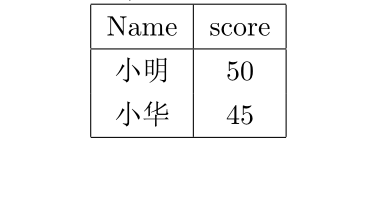
讲解:
(1)第一句是tabular表格的开始,参数{|c|c|}中的第一个|表示表格中的左边竖,第二、三个分别是中间和右边的竖。而c表示表格中的字体居中,l(left)和r(right)表示表格中字体靠左和靠右。可以尝试将{|c|c|}改为{c|c}即不要两边的竖线。
(2)\hline(horizontal line)表示画一条水平线
(3)%是注释,\是换行,\hline可以紧接在\后,如下表示:
\\ \hline- 1
会显得更紧凑。
当然,这个表格是不浮动的,和图片一样,如果想加入\caption的话,可以构成浮动的图片(但毕竟可以写标题了呀,想想还是赚的)。这个时候需要用到table环境。如下
\begin{table}
\centering
\begin{tabular}{|c|c|}
\hline
% after \\: \hline or \cline{col1-col2} \cline{col3-col4} ...
Name & score \\
\hline
小明 & 50 \\
小华 & 45 \\
\hline
\end{tabular}
\caption{这是一个表格}
\end{table}- 1
- 2
- 3
- 4
- 5
- 6
- 7
- 8
- 9
- 10
- 11
- 12
- 13
同样的\centering是表格居中,否则居左。其他都讲过了,很easy.最后可以使用caption宏包,这个需要自行google。
彩色表格和字体
彩色表格
彩色表格需要用到宏包
\usepackage{xcolor}- 1
没有需要按照上面的方法先安装。因为是针对表格,所以需要支持表格,使用时要如下:
\usepackage[table]{xcolor}- 1
上面的例子可以加入彩色如下:
...
\usepackage[table]{xcolor}
...
...
\begin{table}
\centering
\rowcolors[\hline]{2}{orange}{red!30!yellow}
\begin{tabular}{|c|c|}
\rowcolor{red!20}
Name & score \\
小明 & 50 \\
小华 & 45 \\
\hline
\end{tabular}
\caption{这是一个表格}
\end{table}- 1
- 2
- 3
- 4
- 5
- 6
- 7
- 8
- 9
- 10
- 11
- 12
- 13
- 14
- 15
- 16
结果为: 
说明:
(1)第一行使用宏包xcolor,并支持table
(2)
\rowcolors[\hline]{2}{orange}{red!30!yellow}- 1
这里是表示行颜色的设置,\hline表示每行都加横线,后面表示从第二行开始奇数行用orange颜色,偶数行用30%红色和30%黄色的混合,也可以写成{red!30yellow!30}
(3)因为我们是从第二行开始加颜色,所以第一行要单独加颜色,如下
\rowcolor{red!20}- 1
如果没有则是白色。如果想要单独每行自行设置,也可以如下单独每行设置颜色
\begin{table}
\centering
\begin{tabular}{|c|c|}
\hline
\rowcolor{red!20}
Name & score \\
\hline
\rowcolor{yellow}
小明 & 50 \\
\hline \rowcolor{orange}
小华 & 45 \\
\hline
\end{tabular}
\caption{这是一个表格}
\end{table}- 1
- 2
- 3
- 4
- 5
- 6
- 7
- 8
- 9
- 10
- 11
- 12
- 13
- 14
- 15
彩色字体
同样是xcolor包
{\color{violet}{哇,这是我的第一个 \LaTeX{} Article!}}- 1

这一行是通过一个大花括号括起来的(即最左和最后的括号),如果没有则整篇文章都是这种颜色的字体,括起来后就只有这一句话是这个颜色。
更多颜色设置见官网 and it’s pdf article
13.交叉引用(corss-reference)
关于引用部分上面已经提及了一些,上面11的(4)我们用的是\ref {xxx}这个命令。这个命令有一个缺点是它只给出图、定理等的序号,比如“如图2所示”当我们使用\ref时需要写成:
如图\ref{xxx}所示 - 1
当我们并不知道这个\ref{xxx}是图还是表格还是定理等等的时候就比较麻烦,或者我们不想输入“图”,“表格”这样的字眼,这时可以使用宏包(同样,如果没有宏包先按照上面的方法安装)
\usepackage{hyperref}- 1
然后将\ref {xxx}改为\autoref{xxx},e.g.
......
\usepackage{hyperref}
...
...
\begin{equation}
f(x)=
\left\{
\begin{array}{cc}
\int \mathrm{d}^3p\int_{0}^{\infty}\mathrm{d}x x^2 \frac{\delta(E-\sqrt{p^2+m^2})}{2E} , & x \geq 0 \\
0,& x < 0
\end{array}
\right.
\label{myequation}
\end{equation}
We all know \autoref{myequation} is a important equation- 1
- 2
- 3
- 4
- 5
- 6
- 7
- 8
- 9
- 10
- 11
- 12
- 13
- 14
- 15
we can get:
可以看到自动加了equation这个词,而且是红色方框,点击可以直接跳到公式2.
14.文章布局
(1)页面大小
使用tex得到的pdf很窄,左右空的地方很大,如果我们想让它跟微软中的word一样的页面,可以在导言部分加入以下命令
\usepackage[top=2.54cm, bottom=2.54cm, left=3.18cm,right=3.18cm]{geometry}- 1
(2)页眉页脚
参考文献见这里
使用宏包
\usepackage{fancyhdr}- 1
在导言部分加入
\usepackage{fancyhdr}
\pagestyle{fancy}
\lhead{wudl}
\chead{$wudl's$ $tutorial article$}
\rhead{\thesection}
\cfoot{\thepage}- 1
- 2
- 3
- 4
- 5
- 6
上面的结果是,页眉左上边是wudl,中间是chead中的句子,右上边是章节,页脚是页码。实际还有很多可选参数,自行查找需要的。
当然上面的页码是“1”“2”“3”这样的数,如果想要A of B,即第A页共B页,则要使用lastpage宏包。
如下:
\usepackage{fancyhdr}
\usepackage{lastpage}
\pagestyle{fancy}
\lhead{wudl}
\chead{$wudl's$ $tutorial article$}
\rhead{\thesection}
\cfoot{Page \thepage of \pageref{LastPage}}- 1
- 2
- 3
- 4
- 5
- 6
- 7
结果为
(3)列举
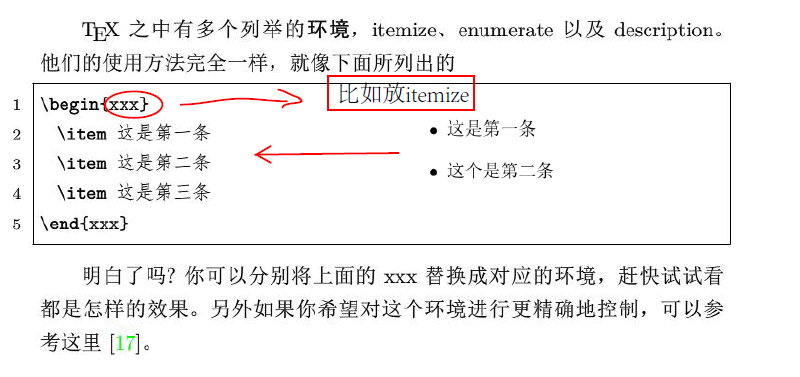
(4)参考文献
A.手动输入
手动输入采用thebibliography环境,手动输入适合参考文献比较少的情况
As is stated in \cite{bibitem1} blahblah\dots
\begin{thebibliography}{9}
\bibitem{bibitem1}
天朝. 朕的江山和子民[M]. 朕的天朝:天朝出版社. 2018
\bibitem{bibitem2}
blahblah(ditto)- 1
- 2
- 3
- 4
- 5
- 6
- 7
- 8
这里\bibitem跟上面的列举中\item是一样的,上面的9表示最多可能有9条参考文献。结果为:
B.使用Bibtex
这个比较复杂,以后再补充
15.超链接
使用
hyperref- 1
实际上面都用过这个了。
16.插入代码
参考百度知道
%导言部分
...
...
\usepackage{listings} %加入宏包
\lstset{language=Python} %Python语言
\lstset{breaklines} %自动将长的代码换行排版
\lstset{extendedchars=false} %解决代码跨页时,章节标题,页眉等汉字不显示的问题
...
...
%需要插入代码的地方
\begin{lstlisting}
放入代码
\end{lstlisting}- 1
- 2
- 3
- 4
- 5
- 6
- 7
- 8
- 9
- 10
- 11
- 12
- 13
这样的方法是代码是没有彩色的,结果如下 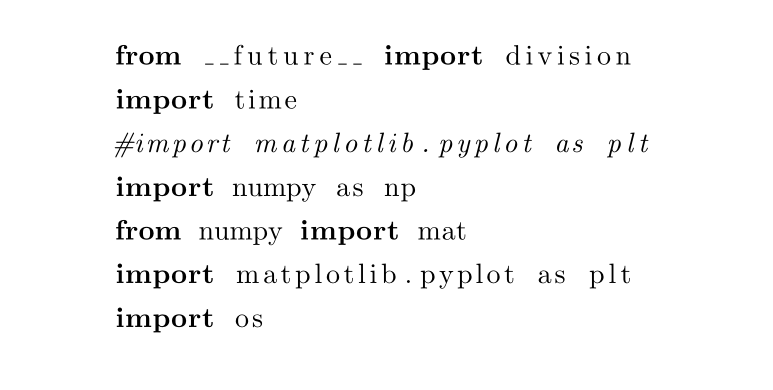
解决彩色问题可以到网上找到已经修改彩色的代码,放入导言部分即可,实际上就是使用上文讲过的xcolor宏包自定义颜色。
例:自定义颜色(参考conding算子)
自定义颜色使用了listings和color两个宏包
\usepackage{listings}
\usepackage{color}
\definecolor{dkgreen}{rgb}{0,0.6,0}
\definecolor{gray}{rgb}{0.5,0.5,0.5}
\definecolor{mauve}{rgb}{0.58,0,0.82}
\lstset{ %
language=Octave, % the language of the code
basicstyle=\footnotesize, % the size of the fonts that are used for the code
numbers=left, % where to put the line-numbers
numberstyle=\tiny\color{gray}, % the style that is used for the line-numbers
stepnumber=2, % the step between two line-numbers. If it's 1, each line
% will be numbered
numbersep=5pt, % how far the line-numbers are from the code
backgroundcolor=\color{white}, % choose the background color. You must add \usepackage{color}
showspaces=false, % show spaces adding particular underscores
showstringspaces=false, % underline spaces within strings
showtabs=false, % show tabs within strings adding particular underscores
frame=single, % adds a frame around the code
rulecolor=\color{black}, % if not set, the frame-color may be changed on line-breaks within not-black text (e.g. commens (green here))
tabsize=2, % sets default tabsize to 2 spaces
captionpos=b, % sets the caption-position to bottom
breaklines=true, % sets automatic line breaking
breakatwhitespace=false, % sets if automatic breaks should only happen at whitespace
title=\lstname, % show the filename of files included with \lstinputlisting;
% also try caption instead of title
keywordstyle=\color{blue}, % keyword style
commentstyle=\color{dkgreen}, % comment style
stringstyle=\color{mauve}, % string literal style
escapeinside={\%*}{*)}, % if you want to add LaTeX within your code
morekeywords={*,...} % if you want to add more keywords to the set
}- 1
- 2
- 3
- 4
- 5
- 6
- 7
- 8
- 9
- 10
- 11
- 12
- 13
- 14
- 15
- 16
- 17
- 18
- 19
- 20
- 21
- 22
- 23
- 24
- 25
- 26
- 27
- 28
- 29
- 30
- 31
- 32
- 33
导入模块
参考gaojiaxing 和 instant以python为例,下载python版本的hightlighting,地址点这里。下载完成要将pythonhighlight.sty和放在工作目录下。
可以有两种方法来加载自己写的python代码。其一是将python代码在python自己的编辑器中写完保存为.py文件放到工作目录下(如test.py),之后加载的时候只需要\inputpython…即可,这种方法可以节省大量的WinEdt书写空间
...
...
\usepackage{graphicx}
\usepackage{pythonhighlight}
...
...
\inputpython{test.py}{1}{41}#导入python文件test.py第一行到第41行
...- 1
- 2
- 3
- 4
- 5
- 6
- 7
- 8
结果如下:
其二,可以通过
\begin{xxx}
代码
\end{xxx}- 1
- 2
- 3
例如:
\begin{python}
#
from pyx import *
def f():
g = graph.graphxy(width=8)
g.plot(graph.data.function("y(x)=sin(x)/x", min=-15, max=15))
g.writePDFfile("function")
print r'\includegraphics{function}'
return f
\end{python}- 1
- 2
- 3
- 4
- 5
- 6
- 7
- 8
- 9
- 10
结果如下;
17.目录
插入目录使用
\tableofcontents- 1
注意这句话要在\begin{document}之后,end之前,例如:
\documentclass{article}
\usepackage{hyperref}
\begin{document}
\tableofcontents
\section{A section}
This is a section
\paragraph{A paragraph}
This is a paragraph
\subsection{A subsection}
This is a subsection
\end{document}- 1
- 2
- 3
- 4
- 5
- 6
- 7
- 8
- 9
- 10
- 11
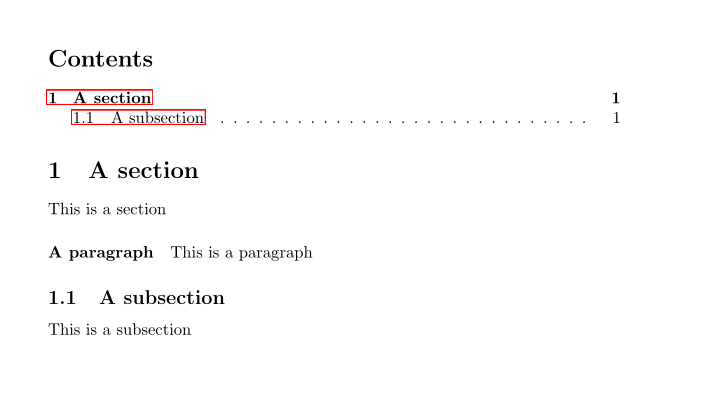
注意上面的代码使用了超链接
\usepackage{hyerref}- 1
如果没有这个超链接是不会有红色部分的。











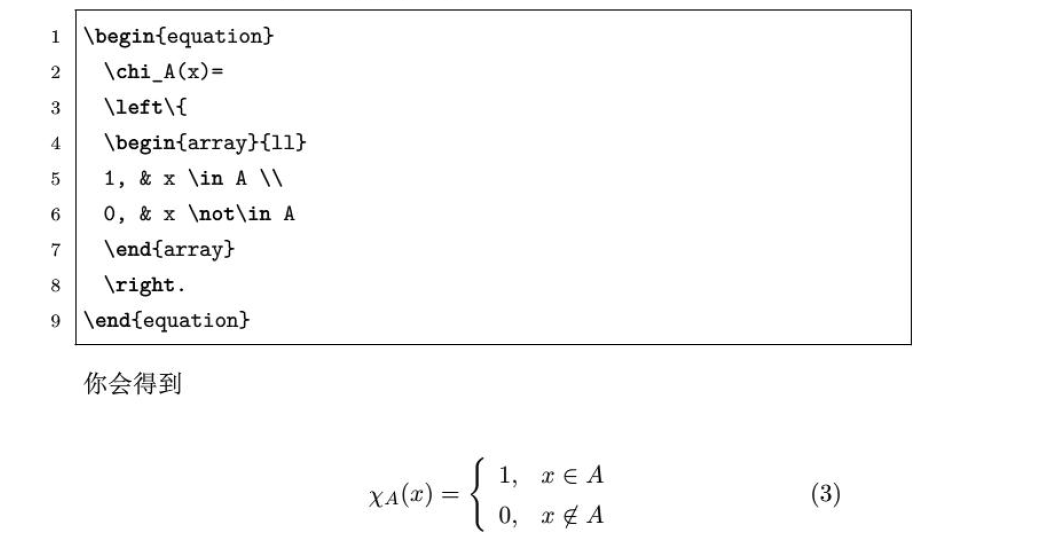
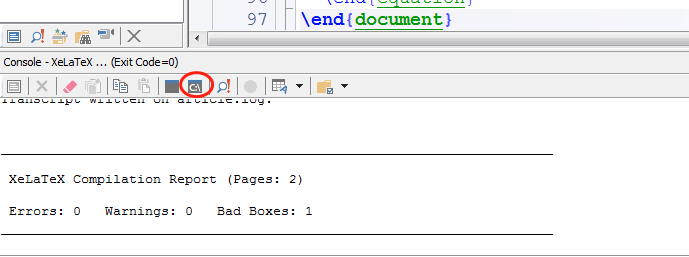
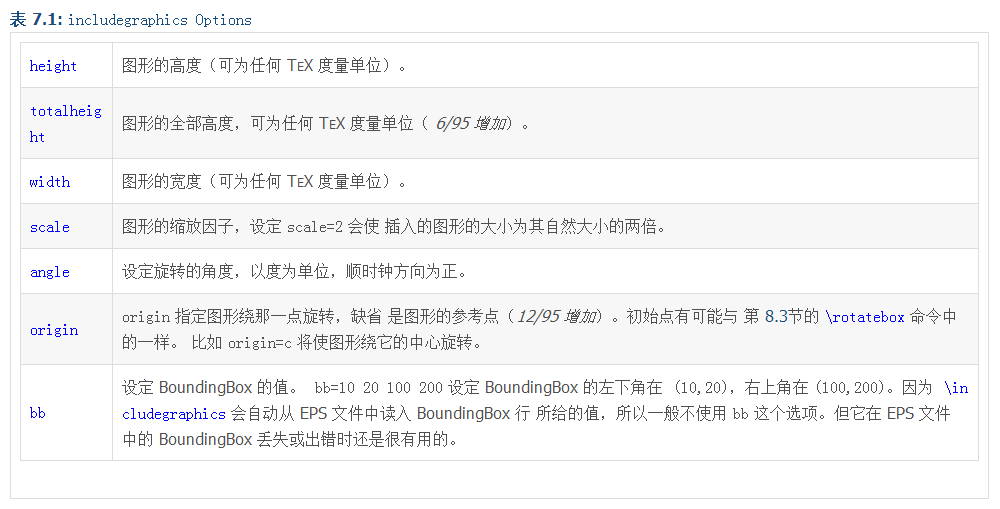


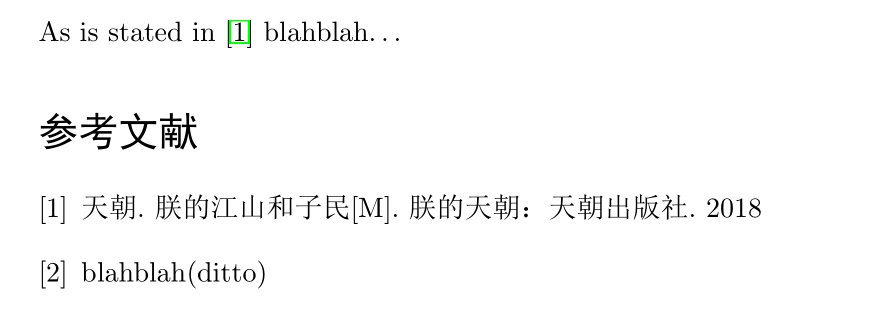
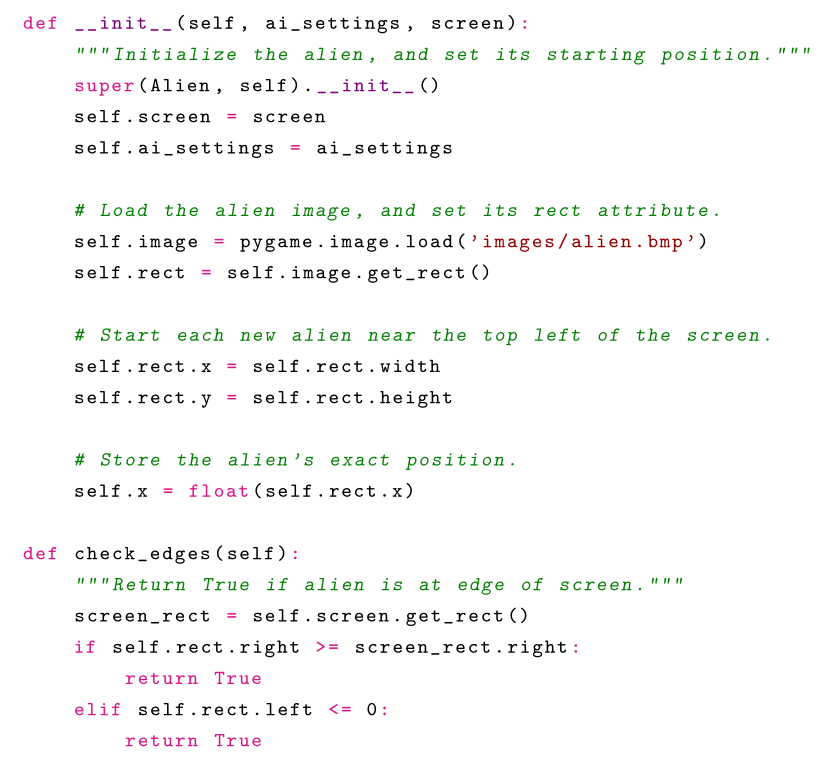















 1万+
1万+











 被折叠的 条评论
为什么被折叠?
被折叠的 条评论
为什么被折叠?








